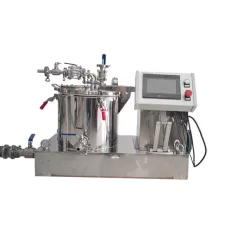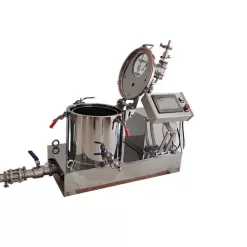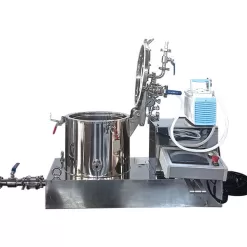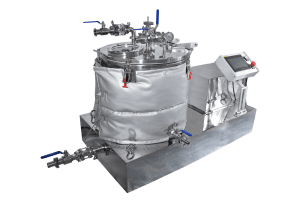
The centrifuge is a device that utilizes the centrifugal force to separate liquid and solid particles or components of a liquid mixture. It is initially used for separating the compositions of milk, and now expands into the scientific, medical and other fields. It is a extremely popular and effective solid-liquid extraction technique, and widely used in many fields, such as the chemical engineering, petroleum, food processing, pharmaceutical, mineral processing, carbon, water treatment, nuclear energy industry and shipbuilding, and other fields.
Working Principle of Centrifuge
A centrifuge works based on the sedimentation principle and the centrifugal force. The high-speed rotation of centrifuge rotor can generate a strong centrifugal force, accelerating the sedimentation speed of the solid in liquid and separating substances with different settlement coefficient and buoyance coefficient.
Working Process of Centrifuge
It has a drum rotating around its axis at high speed, which is usually driven by a motor. After the suspension or emulsion is added to the drum, it’s quickly driven to rotate at the same speed as the drum. Each component is sepaprated under the action of the centrifugal force and discharged respectively. Generally, higher the rotating speed of the drum is, better the separating effect is. The centrifuge is widely used in the chemical, petroleum, food, pharmaceutical, mineral processing, coal, water treatment and shipping sectors. It is a special and effective instrument that separates and precipitates a mixture (containing solids) by using the centrifugal force. The following steps are normally included when a centrifuge works.
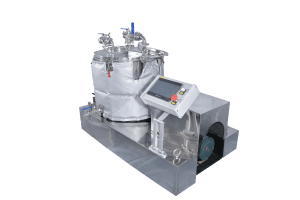
Step 1: Start Up
The motor drives the gear through the friction clutch, and then transmits it to the vertical shaft to drive the drum to operate evenly and smoothly. And then it reaches the rated speed in 6-7 minutes. Open the sealed water solenoid valve and seal the water to make the drum seal. Open the water purification valve slowly, inject clean water into the drum of the centrifuge, and observe whether the slag discharge leaks.
Step 2: Separate Substances
Adjust the centrifuge to the appropriate treatment volume and outlet pressure so that the centrifuge can be in the normal separation state.
Step 3: Slag Discharge
Long slag separation time may result in close packing of slag (algae pulp) in the drum slag cavity, which can cause poor slagging and imbalance of the drum. If the imbalance is too large, the centrifuge may be damaged. Many factors affect the slagging cycle and slagging time, and users need to set the appropriate interval according to the specific experience.
Step 4: Shutdown
Open the water purification valve slowly, inject clean water into the drum of the centrifuge, and repeat the slagging procedure to clean the drum. Then close the water inlet valve, the sealing water solenoid valve,and the motor. Use the brakes at intervals, or stop naturally.
What does a Centrifuge do?
There are a multitude of uses or applications of centrifuges. Generally, a centrifuge is an essential equipment that can be used to separate liquid and solid particles or liquid mixture with liquid components by making using of the centrifugal force. Speaking specifically, centrifuges are mainly used to separate liquid and solid particles in the suspension or separate immiscible liquids with different densities in the emulsion. As well, centrifuges can be adopted to extract liquid from the wet solid. For example, a washing machine is used to dry wet clothes. The special ultra-velocity tube centrifuges can be used to separate gas mixtures of different densities. Due to solid particles of different densities or sizes in liquid features various sedimentation speed, some centrifuges can classify solid particles according to densities or particle sizes.
[title text=”Related Products” tag_name=”h2″ color=”rgba(32, 163, 219, 0.81)”]
[title text=”Related Posts” tag_name=”h2″ color=”rgba(32, 163, 219, 0.81)”]
https://www.rotovap.cn/blog/6625.html
https://www.rotovap.cn/blog/6628.html
https://www.rotovap.cn/blog/6049.html

